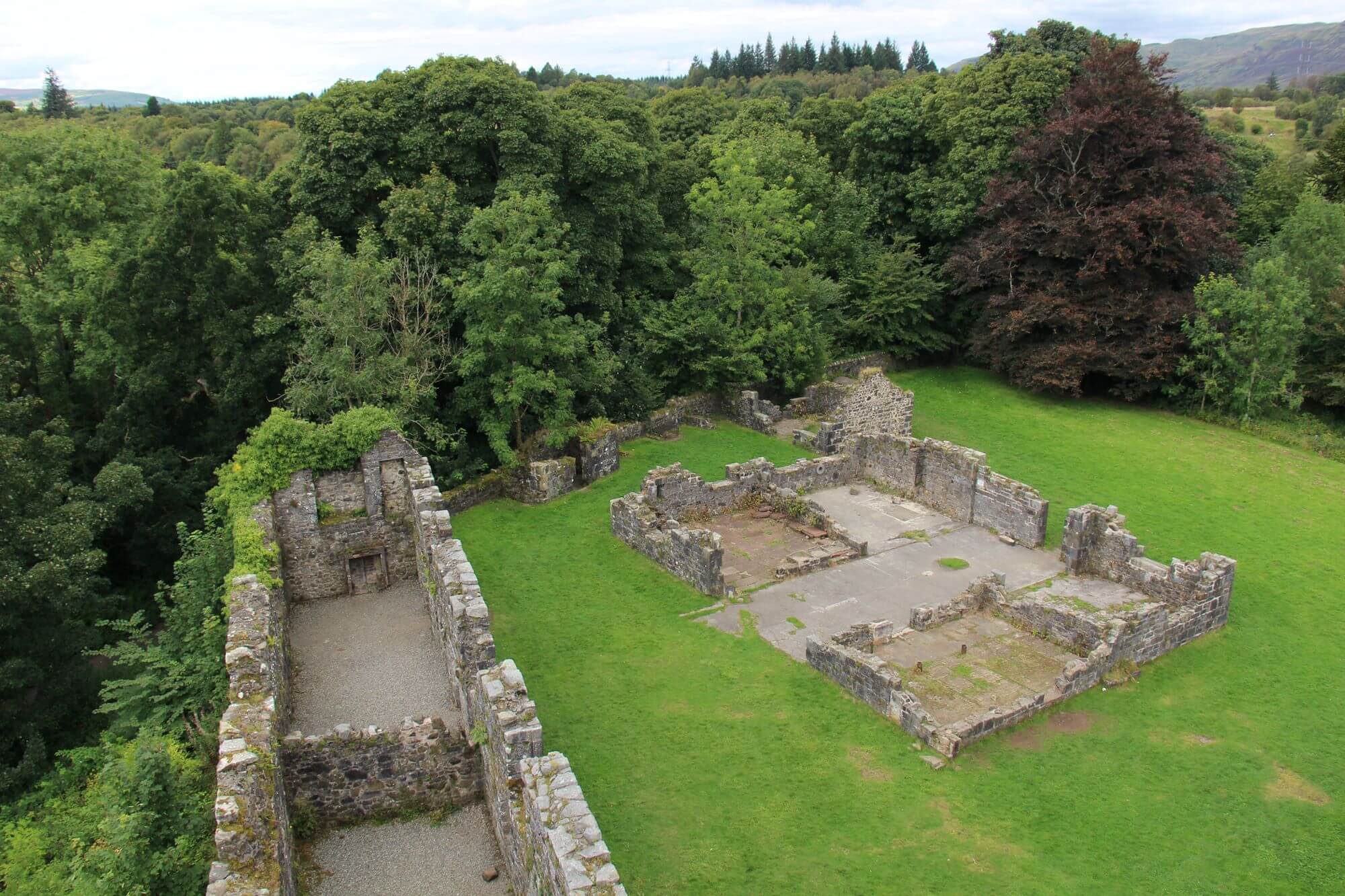Mugdock Castle
1300 - 1600
1600 to 1800
1800 - 1875
1875 -
100 metres to the north of the south-west tower, at the edge of a steep bank, lies a ruin lies a stone ruin which is thought to date from the early-16th Century. Although popularly known as “The Chapel”, it is doubtful if this was used for religious purposes. To the north of the Chapel lies a tower with two arrow slits facing out over Mugdock Loch. It is thought that this may have been used as a latrine during the Middle Ages.

Moothill
Moot Hill was thought to have been a hill of judgement during the Dark Ages and the later Mediaeval period. This meant that anyone convicted of a serious crime would be sentenced there after having been tried in the Courthall of Mugdock Castle. There is also a theory that the site was used by the freemen of the district as a kind of local parliament where legal matters were conducted and quarrels settled. At that time, Moot Hill was a tiny island in Mugdock Loch some 200 metres to the north of the Castle. Today, it is part of the surrounding countryside but few are aware of the ancient secrets it may conceal for Moot Hill is believed to have been the site of two crannogs one dating from the Bronze Age (1,800 – 800 BC), the other from the Iron Age (800 – 200 AD).
Crannogs were large loch dwellings built on circular, man-made islands. The bases were composed of large rocks surrounded by stout wooden posts which were driven into the bed of the loch. A timber platform was laid on top of this with a large, round, thatched house in the centre. The house would have been 15 metres across and divided into several compartments. A large clay hearth dominated the interior and there was a hole in the thatched roof to allow the smoke to escape. Outside was a wide, wooden platform for the inhabitants to walk on. A small jetty faced away from the loch side and could only be accessed by dug-out canoe. Some crannogs had a causeway which connected with the loch side. This ran in zigzag fashion just below the surface of the loch. The crannog dwellers would know well the direction the causeway took but not an attacker who, hopefully, would end up in the loch!

